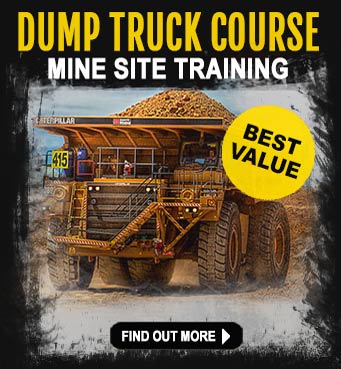
The recent occurrence of mining accidents has once again highlighted the case for ongoing safety training for full time employees and contractors.
The recent mine accidents at Fortescue Metals Group at their Christmas Creek mine in WA, seem to go unheeded as another miner is injured in a Queensland mine.A Queensland miner working at a coal mine has been involved in a mining accident involving a cable reeler He sustained serious crush injuries after the cable reeler broke loose from it’s housing, pinning his arm. He was working alone at the time and as a result it took over an� hour before medical attention could be administered. Mining accidents of this nature are commonplace in the mining industry.
Many accidents on a mine site involve the person’s hands or legs/feet owing to the hands-on nature of mining work in often hazardous situations.
Mining accidents involving a person working on their own drastically increase the risk of accidents occurring and when they do, the possibility of serious injury is increased owing to medical attention being impossible.
“greater attention to training and risk assessment is required”
Mine site workers are always going to be presented with challenging work environments; and in order to stop these kinds of accidents happening, greater attention to training and risk assessment is required. In this case there was no one else working nearby at the time of the accident.
Mine site employees are initially inducted into the industry by attending a specific mining induction course, often referred to as the Standard 11. The mining induction training course is designed to educate mine workers on the risks and hazards of working in a mining environment, with the sole purpose of keeping the worker and others working in the vicinity – free from mining accidents.
Mining Induction course helps raise safety awareness in mining
In Queensland, the state government has legislation to prevent workers who have not completed the Mining Induction course from being present on a mine site. Despite this, mining accidents seem to be commonplace.
“taking unnecessary risks increases accidents”
This recent mining accident happened because the person involved in the accident took a risk in working with an unsecured object. The Queensland Department on Natural Resources and Mines said in it’s reports that the worker had to remove a bolt from the mounting cradle retaining clamp and in doing so he had to locate his arm in a pinch point.
At this point, the cable reeler freely rotated, dislodged from the cradle, trapping the man’s arm.
“two similar incidents have previously occurred at the mine”
This is not the first time this type of accident has happened at the mine. Reports indicate two similar incidents have previously occurred at the mine. Which again brings up the question of risk assessment and reporting of accidents and hazards via JSA, SLAM’s or “Take Fives”.
The act of reporting hazards to a supervisor is the correct course of action to take when workers are faced with potential risk in the workplace. If these hazards are not acted on and the risk is mitigated, then further accidents will and have occurred.
Site-specifc inductions for employees and mining contractors
The Department said to ensure these types of accidents don`t reoccur mining companies must review their current training methods as well as introduce refresher type course. This can be achieved by providing ongoing employee training, focusing on generic mining induction and safety awareness reviews as well as site-specifc inductions for employees and mining contractors alike.
For new starters who are entering the mining and resource industry, these types of incidents highlight the need for highly regulated mining induction and mining refresher courses to prevent further mining accidents.
[sc:post_coalcourses ] [sc:ifooter ]
